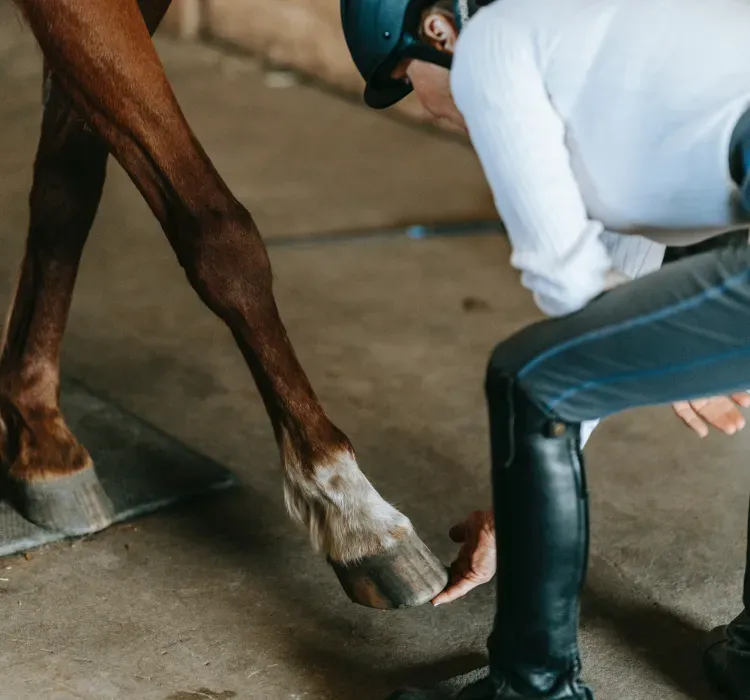
Contracted heels are very common and frequently result in heel pain and associated lameness. So what are contracted heels?
Identifying Contracted Heel
Pick up your horse’s foot and look for any of the following :
- A very concave and deep sole with a wasted frog
- Narrow frog and heel bulb
- The base of the heel bulb curves inwards
- The front foot is narrow rather than well rounded
- The rear foot is unusually narrow
- Viewed from the side the hoof heel area curves inwards.
The next two pictures compare a badly contracted foot with a good foot.
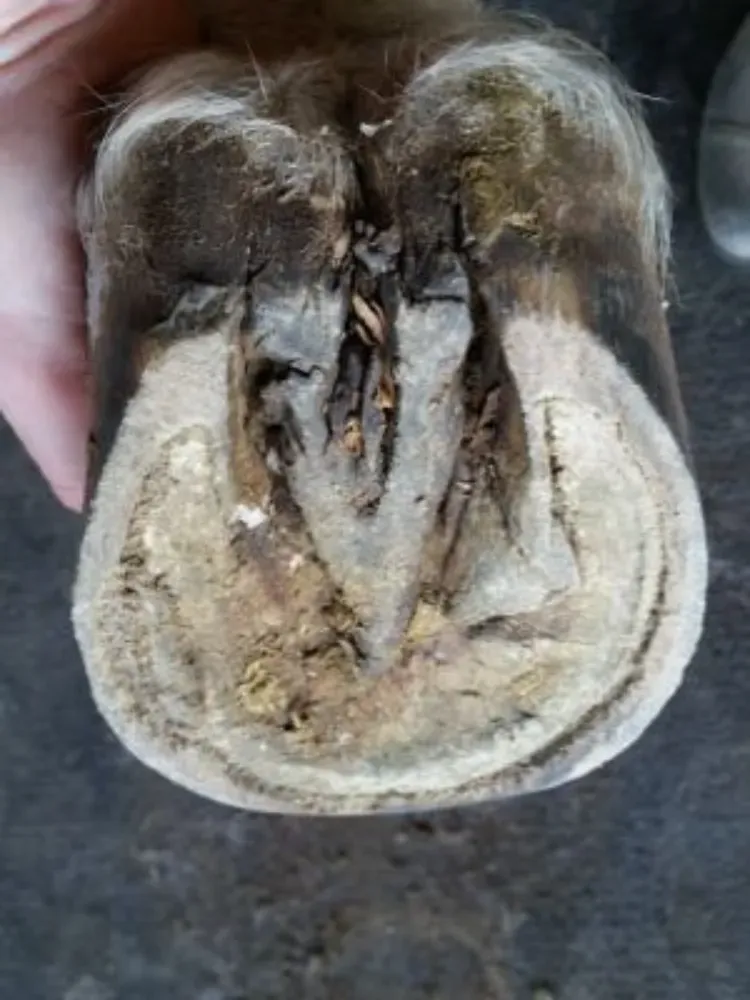
Contracted Heel
This contracted front foot has a very narrow frog. The foot is very concave and is long rather than round.
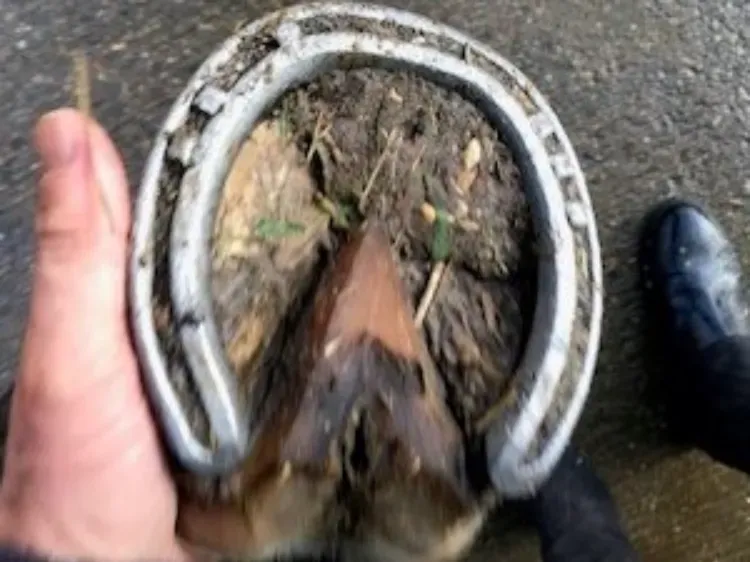
Healthy Foot
This foot is not contracted. Notice the wide healthy frog and heel bulb. The sole is concave without being deep.
Causes of Contracted Heel
- Navicular syndrome affecting the hoof capsule shape.
- Poor shoeing and trimming techniques.
- Upright boxy feet frequently have contracted heels and atrification of the frogs
- Inactivity
Contracted heels result in poor blood circulation within the foot and this exasperates the problem.
Why do Contracted Heels cause Problems
Two problems with contracted heels:
1. A normal foot expands slightly on contact with the ground and this helps absorb concussion, but this does not happen with contracted heels.
2. With contracted heels the frog and digital cushion are compressed and will not function effectively. Less concussion will be absorbed and less blood will be pumped around the foot capsule.
Helping a horse with Contracted Heels
Navicular syndrome is a chronic condition and will need ongoing farrier and veterinary assistance. For more on this read the snapshot on Low Heels and Horse Soundness.
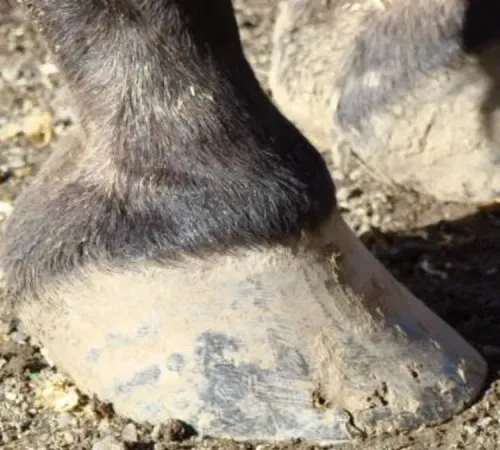
Article Suggestion
A Snapshot – Low Heels and Horse SoundnessChange your farrier if contracted heels are the result of your horse being incorrectly shod. He must be shod so that his heels can expand, and would benefit from having some time without being shod. Turning your horse out at grass results in more movement and increased blood circulation within the foot capsule. This and corrective trimming help to reverse the process.

Correctly Placed Nails
This well-shod horse naturally has round feet with good heels. Notice that the nails are placed to permit the heel area to expand on impact with the ground.
Sometimes Contracted Heels are not a Problem
As if by contradiction mules naturally have contracted heels that cause no problems. In addition, some horse breeds lean towards contracted upright feet and function well with no apparent issues.
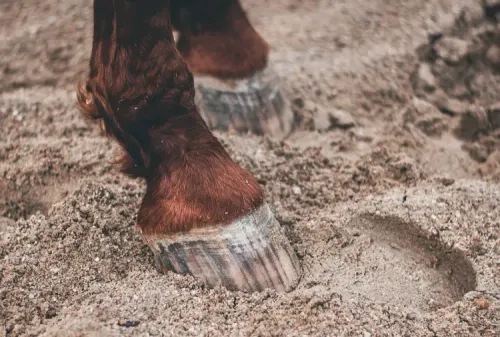
Article Suggestion
All you need to know about SDFT Injury and your Horse
